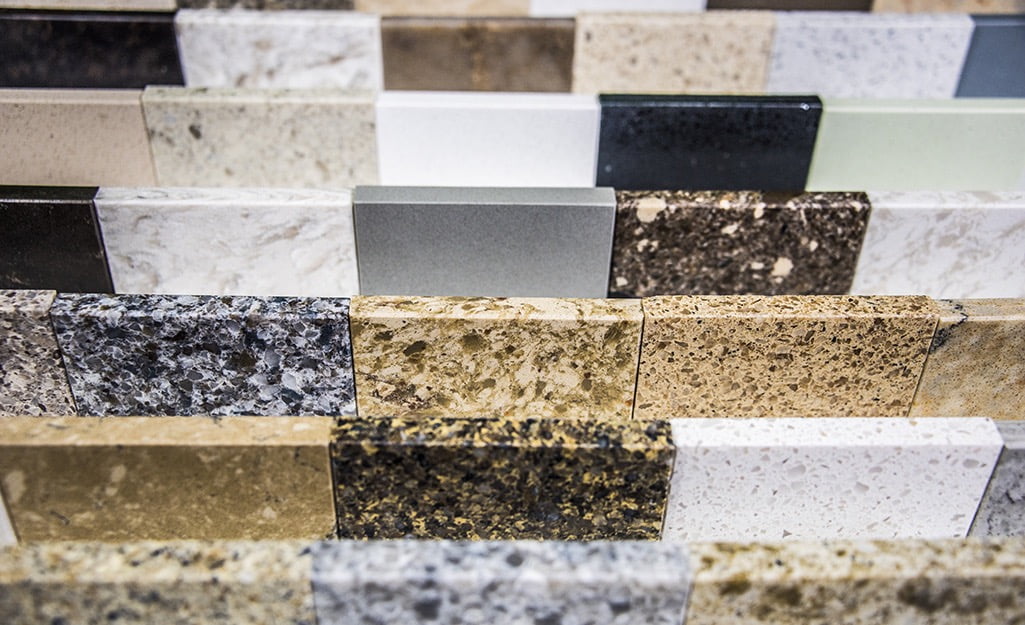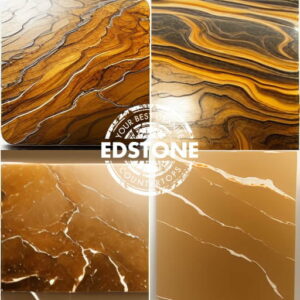We often admire the beauty and durability of granite and quartz countertops, but have you ever wondered where these popular materials come from and how they evolved over time? In this article, we will take a fascinating journey through the history of granite and quartz, exploring their origins, evolution, and the role they’ve played in human civilization.
The Early History of Granite and Quartz
Formation of Granite
Granite is an igneous rock formed from the slow cooling and solidification of magma deep beneath the Earth’s surface. This process allows the minerals within the magma to crystallize, resulting in the speckled appearance of granite. This formation process can take millions of years, and the age of granite formations varies greatly, with some dating back over 2 billion years.
Formation of Quartz
Quartz is a mineral that forms in a variety of geological environments, including igneous, metamorphic, and sedimentary rocks. The most common type of quartz, known as alpha-quartz, is formed through the cooling of magma, much like granite. Quartz can also form through the metamorphism of sandstone under heat and pressure, as well as through precipitation from hot hydrothermal fluids.
Granite and Quartz in Ancient Civilizations
Egypt
The use of granite and quartz dates back thousands of years. In ancient Egypt, granite was prized for its strength and durability, making it an ideal material for monumental structures like obelisks and the famous pyramids. Quartz, often found as beautiful crystals within granite, was used in jewelry, talismans, and even early forms of cosmetics.
Rome
The ancient Romans also appreciated the qualities of granite and quartz. Roman engineers used granite in the construction of buildings, bridges, and aqueducts, while artisans crafted intricate mosaics with quartz and other colorful stones. The Romans even imported granite from Egypt, further spreading the use of this versatile material.
China
Granite and quartz were also utilized in ancient China. Granite was used in the construction of the Great Wall, while quartz crystal was believed to possess mystical properties and was used in traditional Chinese medicine and spiritual practices.
Granite and Quartz in the Middle Ages
Europe
During the Middle Ages, granite was commonly used in the construction of castles and churches throughout Europe, thanks to its strength and durability. The famous Mont Saint-Michel in France and the Tower of London are just two examples of structures that feature granite. Quartz, on the other hand, continued to be used for decorative purposes and in jewelry.
India
India has a long history of using granite and quartz in its architecture and religious monuments. The magnificent temples of South India, such as the Brihadeeswarar Temple, showcase the skill of Indian craftsmen in working with granite. Quartz, particularly rose quartz, was used in the creation of ornate carvings and sculptures.
Granite and Quartz in the Modern Era
Industrial Revolution
The Industrial Revolution brought about significant advancements in the extraction and processing of granite and quartz. With the development of new machinery and techniques, it became possible to quarry and transport larger blocks of granite more efficiently. These advancements also allowed for the production of thinner slabs, making granite more affordable and accessible for a wider range of applications.
Technological Advancements
In the 20th century, the invention of engineered quartz revolutionized the use of quartz in the countertop industry. Engineered quartz is made by combining natural quartz with resins and pigments, creating a durable and versatile material with a wide range of colors and patterns.
The Rise of Granite and Quartz Countertops
Advantages of Granite
Granite countertops have become increasingly popular in recent years due to their unique beauty, durability, and heat resistance. Each slab of granite is one-of-a-kind, with its own pattern and coloration, making it a sought-after material for homeowners looking for a distinctive and natural look in their kitchens and bathrooms.
Advantages of Quartz
Quartz countertops have also gained popularity for their durability, stain resistance, and low maintenance requirements. Engineered quartz offers a wide range of colors and patterns, often mimicking the look of natural stone, while providing a more consistent and uniform appearance.
Environmental Impact and Sustainability
As the demand for granite and quartz countertops has grown, so have concerns about the environmental impact of mining and processing these materials. Efforts are being made to improve the sustainability of granite and quartz production, such as the use of recycled materials in engineered quartz and the implementation of more efficient quarrying techniques for granite. Additionally, some companies have sought certification for their sustainable practices, providing consumers with eco-friendly options for their countertop choices.
Conclusion
The history of granite and quartz is a fascinating tale of geological processes, human ingenuity, and the evolution of popular materials. From their origins deep within the Earth to their use in the stunning monuments of ancient civilizations, and finally to their rise as the stars of today’s countertop industry, granite and quartz have proven to be versatile and enduring materials that continue to captivate and inspire.
FAQs
- When did people first start using granite and quartz in construction?
- The use of granite and quartz dates back thousands of years, with examples from ancient Egypt, Rome, and China showcasing their use in monumental structures and decorative arts.
- What is engineered quartz and how is it made?
- Engineered quartz is a man-made material created by combining natural quartz with resins and pigments. This results in a durable, versatile, and consistent material with a wide range of colors and patterns.
- Are granite and quartz countertops eco-friendly?
- There are concerns about the environmental impact of mining and processing granite and quartz, but efforts are being made to improve sustainability in the industry. This includes the use of recycled materials in engineered quartz and more efficient quarrying techniques for granite.
- Which is better for countertops, granite or quartz?
- Both granite and quartz have their advantages and disadvantages, and the right choice depends on personal preferences and needs. Granite offers a unique and natural look, while quartz provides a more consistent and uniform appearance with low maintenance requirements.
- Can granite and quartz be used for applications other than countertops?
- Yes, granite and quartz have been used in a variety of applications throughout history, including construction, decorative arts, and even spiritual and medicinal practices.





